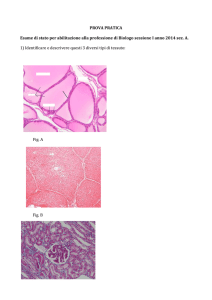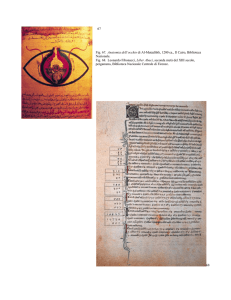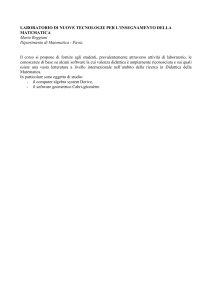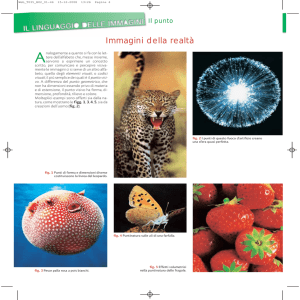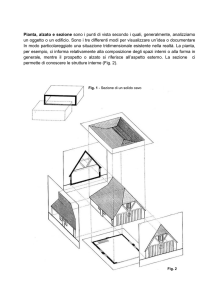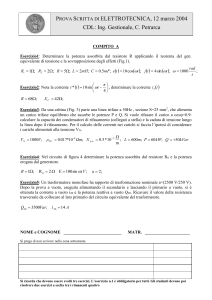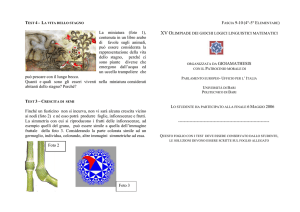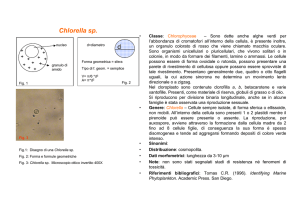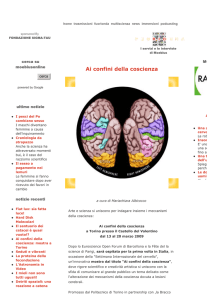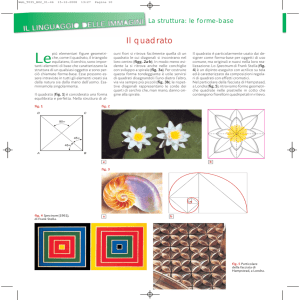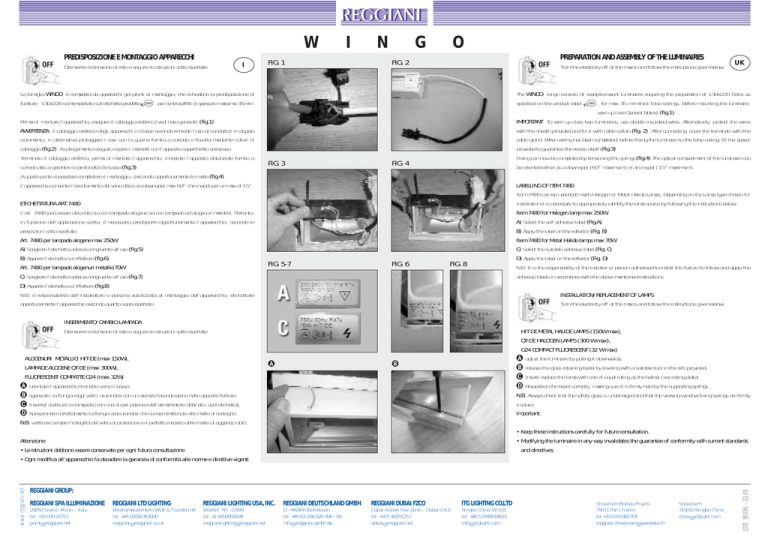
W
I
I
FIG. 1
N
G
O
PREPARATION AND ASSEMBLY OF THE LUMINAIRES
Turn the electricity off at the mains and follow the instructions given below.
FIG. 2
La famiglia WINGO, è composta da apparecchi già pronti al montaggio, che richiedono la predisposizione di
forature, 130x220 come riportato sull’etichetta prodotto
, per controsoffitti di spessore massimo 35mm.
Prima di montare l’apparecchio, eseguire il cablaggio elettrico (vedi note generali) (fig.1).
AVVERTENZA: il cablaggio elettrico degli apparecchi in classe seconda richiede l’uso di conduttori in doppio
isolamento, in alternativa proteggere i cavi con la guaina fornita a corredo e fissarla mediante collari di
cablaggio (fig.2). A collegamento eseguito coprire i morsetti con l’apposito coperchietto serracavo.
Terminato il cablaggio elettrico, prima di montare l’apparecchio, innestare l’apposito distanziale fornito a
corredo atto a garantire la profondità d’incasso (fig.3).
A questo punto è possibile completare il montaggio, caricando opportunamente le molle (fig.4).
L’apparecchio consente l’orientamento del vano ottico sia down-spot max 60° che in-spot per un max di 15°.
ETICHETTATURA ART.7480
L’art. 7480 può essere utilizzato sia con lampade alogene sia con lampade ad alogenuri metallici. Pertanto,
in funzione dell’applicazione scelta, è necessario predisporre opportunamente l’apparecchio, secondo le
prescrizioni sotto riportate.
Art. 7480 per lampade alogene max 250W
A) Scegliere l’etichetta adesiva congruente all’uso (fig.5)
B) Apporre l’etichetta sul riflettore (fig.6)
Art. 7480 per lampade alogenuri metallici70W
C) Scegliere l’etichetta adesiva congruente all’uso (fig.7)
D) Apporre l’etichetta sul riflettore (fig.8)
N.B. è responsabilità dell’installatore o persona autorizzata al montaggio dell’apparecchio, etichettare
opportunamente l’apparecchio secondo quanto sopra riportato.
FIG. 3
FIG. 5-7
The WINGO, range consists of ready-to-mount luminaires requiring the preparation of 130x220 holes as
specified on the product label
, for max 35 mm thick false ceilings. Before mounting the luminaire,
wire up (see General Notes) (fig.1).
IMPORTANT: To wire up class two luminaires, use double insulated wires. Alternatively, protect the wires
with the sheath provided and fix it with cable collars (fig. 2). After connecting, cover the terminals with the
cable gland. When wiring has been completed, before fixing the luminaire to the false ceiling, fit the spacer
provided to guarantee the recess depth (fig.3).
Fixing can now be completed by tensioning the springs (fig.4).The optical compartment of the luminaire can
be oriented either as a down-spot (60° maximum) or an in-spot (15° maximum).
FIG. 4
FIG. 6
FIG. 8
• HIT-DE METAL HALIDE LAMPS (150W max),
• QT-DE HALOGEN LAMPS (300 W max),
• G24 COMPACT FLUORESCENT (32 W max)
adjust the luminaire by pulling it downwards;
release the glass retaining bezel by levering with a suitable tool in the slits provided;
Insert/replace the lamp with one of equal rating as the ballast (see rating plate)
Re-position the bezel correctly, making sure it is firmly held by the supporting springs.
N.B. Always check that the safety glass is undamaged and that the viewing window fixing springs are firmly
in place.
Important:
• Keep these instructions carefully for future consultation.
• Modifying the luminaire in any way invalidates the guarantee of conformity with current standards
and directives.
Attenzione:
• Le istruzioni debbono essere conservate per ogni futura consultazione
• Ogni modifica all'apparecchio fa decadere la garanzia di conformità alle norme e direttive vigenti
www.reggiani.net
LABELLING OF ITEM 7480
Item 7480 can be used both with Halogen or Metal Halide Lamps. Depending on the Lamp type chosen for
installation it is necessary to appropriately identify the lamp source by following the instructions below:
Item 7480 for Halogen lamp max 250W.
A) Select the self adhesive label (Fig.A)
B) Apply the label on the reflector (Fig. B)
Item 7480 for Metal Halide lamps max 70W
C) Select the suitable adhesive label (Fig. C)
D) Apply the label on the reflector (Fig. D)
N.B. It is the responsibility of the Installer or person authorised to install this fixture to follow and apply the
adhesive labels in accordance with the above mentioned instructions.
INSTALLATION/REPLACEMENT OF LAMPS
Turn the electricity off at the mains and follow the instructions given below.
INSERIMENTO/CAMBIO LAMPADA
Disinserire la tensione di rete e seguire le istruzioni sotto riportate.
• ALOGENURI METALLICI HIT-DE (max 150W),
• LAMPADE ALOGENE QT-DE (max 300W),
• FLUORESCENTI COMPATTE G24 (max 32W)
orientare l’apparecchio tirandolo verso il basso;
sganciare, la flangia reggi vetro, aiutandosi con un utensile facendo perno nelle apposite feritoie;
Inserire/sostituire la lampada (con una di pari potenza dell’alimentatore abbinato, vedi etichetta);
riposizionare correttamente la flangia assicurandosi che sia ben trattenute alle molle di sostegno;
N.B. verificare sempre l’integrità del vetro di protezione e il perfetto incastro delle molle di aggancio oblò.
REGGIANI GROUP:
REGGIANI SPA ILLUMINAZIONE
20050 Sovico Milan – Italy
tel. +39 039 20711
point @ reggiani.net
REGGIANI LTD LIGHTING
Borehamwood Herts WD6 1LT London UK
tel. +44 02082363000
reggiani @ reggiani.co.uk
UK
REGGIANI LIGHTING USA, INC.
Wallkill NY 12589
tel. +1 8458958184
reggianilighting @ reggiani.net
REGGIANI DEUTSCHLAND GMBH
D - 46049 Oberhausen
tel. +49 (0) 208 620 396 - 00
[email protected]
REGGIANI DUBAI FZCO
Dubai Airport Free Zone – Dubai U.A.E
tel. +971 46091257
dubai @ reggiani.net
ITG LIGHTING CO.LTD
Ningbo China 315101
tel. +86 57488418655
info @ itglight.com
Showroom Bureau Projets
75011 Paris France
tel.+33 0143382704
reggiani-showroom @ wanadoo.fr
Showroom
315010 Ningbo China
show @ itglight.com
COD. 95096.--.02.09
PREDISPOSIZIONE E MONTAGGIO APPARECCHI
Disinserire la tensione di rete e seguire le istruzioni sotto riportate
LAMPADE A SCARICA Alogenuri metallici, sodio
DISCHARGE LAMPS Metal halide, sodium
FLUORESCENTI COMPATTE
COMPACT FLUORESCENT
ALOGENE A TENSIONE DI RETE
HALOGEN MAINS VOLTAGE
Norme Europee EN 60598-1, EN 60598-2-1, EN 60598-2-2, Direttive comunitarie BT 73/23, EMC 89/336, CEE 93/68
European standards: EN 60598-1, EN 60598-2-1, EN 60598-2-2 Community Directives: LV 73/23, EMC 89/336, EEC 93/68
Conformità
Grado di protezione
IP20
IP20
IP43
IP20
Conformity
Degree of protection
Montaggio diretto su superfici normalmente
infiammabili con apposito distanziale fornito a corredo
Direct mounting on normally inflammable surfaces
with the spacer provided
Non coprire l'apparecchio con materiale isolante
Under no circumstances should the luminaire be covered with insulating material
Il gruppo separato di alimentazione deve essere posto
ad una distanza minima di 300mm dall'apparecchio
e 50mm dalla parte laterale del vano d'incasso
The remote control gear must be placed a minimum of 300mm from the luminaire
and 50mm from the side wall of the recessed housing.
Distanza minima dall'oggetto illuminato
Minimum distance from the object to be illuminated
Sostituire gli schermi di protezione se danneggiati.
E’ vietata l’accensione degli apparecchi privi degli schermi previsti
The safety shields must be replaced in case of damage.
The luminaires must not be turned on without the safety shields.
Prestare la massima attenzione causa elevata tensione durante la fase di accensione lampada. Per
cablaggio al gruppo di alimentazione indipendente, utilizzare esclusivamente conduttori resisteµnti a picchi
di tensione fino 5kV del tipo H0S-K e sezione minima 1,5mm2
High voltage present during the lamp ignition phase. Take extreme care.
For cabling the independent control gear, use only H0S-K type wires resistant to voltage surges of up
to 5 kV and with a minimum cross-section of 1.5mm2.
Apparecchi in Classe I - Collegare il cavo di terra giallo/verde del tipo H03VV-F
Luminaires in Class I - Connect the H03VV-F type yellow/green earth wire
Apparecchi in Classe II - Utilizzare esclusivamente conduttori del tipo H03VV-F in doppio isolamento o
ricoprire i conduttori con la guaina fornita in dotazione
Luminaires in Class II
Use H03VV-F type double insulated wires only or cover the wires with the sheath provided.
Per il collegamento alla rete e/o al gruppo di alimentazione indipendente, utilizzare esclusivamente
cavi resistenti alle alte temperature
For cabling to the mains power supply and/or an independent control gear,
use wires resistant to high temperatures only.
Utilizzare esclusivamente lampade UV-Stop
Use UV-Stop lamps only
I gruppi di alimentazione indipendente per lampade a scarica devono le seguenti caratteristiche:
• tensione di rete 230/240V 50Hz • impulso 3,5-4,5kV • Ta 55°C, Tw 130°C • Protettore termico
• F • CE
tw 130°C
3,5 - 4,5KV
L N
ta 55°C
230 / 240V
50 / 60Hz
Emergency luminaires
Apparecchi in Emergenza
– la linea preferenziale non deve mai essere interrotta;
– flusso luminoso in emergenza, dopo 60s, ~20% flusso lampadina in funzionamento ordinario.
– l’autonomia in emergenza è di 2 ore per lamp 26W e 1ora per lamps 32/42W
– il led verde indica il buon funzionamento del sistema inverter/batteria
– la ricarica completa si ha in 24 ore;
– le batterie, esenti da manutenzione, devono essere sostituite ogni 4 anni;
– ogni semestre controllare la funzionalità dell’impianto, effettuando una scarica completa delle batterie;
– il pallino verde sul portalampada, indica la lampadina del circuito d’emergenza;
RAEE Gli apparecchi di illuminazione sono per definizione degli
RAEE (Rifiuti di Apparecchiature Elettriche ed Elettroniche) e, per
quanto tali, non possono essere assimilati a rifiuti solidi urbani.
Perciò, al termine del loro ciclo di vita, gli RAEE devono essere
correttamente trattati e smaltiti perché potenzialmente pericolosi sia per
l’ambiente sia per la salute umana a causa della presenza di sostanze
pericolose nei componenti elettrici ed elettronici. Pertanto è fatto obbligo
all’utilizzatore di consegnare gli apparecchi di illuminazione usati al
Distributore, a fronte dell’acquisto di un’equivalente apparecchio nuovo,
o esclusivamente per il territorio italiano direttamente al Consorzio per
lo Smaltimento degli Apparecchi di Illuminazione –Ecolight- come
delegato dalla Reggiani S.p.A. Illuminazione, che si incaricheranno del
ritiro gratuito e del conferimento presso i centri di raccolta specializzati
opportunamente costituiti dalle Amministrazioni Pubbliche atti al
recupero, trattamento e smaltimento dei RAEE. Lo smaltimento abusivo
o inadeguato di detti rifiuti comporterà sanzioni economiche e/o
amministrative, il cui ammontare è stabiliti a norma di legge.
N.B. Il ritiro gratuito di un apparecchio di illuminazione può essere
rifiutato nel caso in cui vi sia un rischio di contaminazione del personale
incaricato della raccolta o nel caso in cui risulta evidente che
l’apparecchiatura in questione non contiene i suoi componenti essenziali
o contiene rifiuti diversi dai RAEE o nel caso in cui il peso
dell’apparecchiatura ritirata sia superiore al doppio del peso
dell’apparecchiatura nuova acquistata. In queste circostanze lo
smaltimento è a carico del detentore che conferisce.
WEEE Luminaires are defined as Waste Electrical and Electronic
Equipment (WEEE) and as such may not be disposed of as solid
urban waste. At the end of their life cycle, they must therefore be
correctly treated and disposed of as substances of concern for both the
environment and human health due to the presence of dangerous
substances in the electrical and electronic components.
The user must therefore consign used luminaires to the distributor when
purchasing an equivalent new luminaire or, exclusively in the case of
Italy, directly to Ecolight, the Consortium for the Disposal of Waste
Electrical and Electronic Equipment (Consorzio per lo Smaltimento degli
Apparecchi di Illuminazione), delegated by Reggiani S.p.A.
Illuminazione, who will collect the equipment free of charge and delivery
it to the special collection facilities set up by the local authorities to
recover, treat and dispose of WEEE.
The illegal or inappropriate disposal of said waste is punishable by
economic and/or administrative sanctions of the amount established by
the law.
N.B. The free collection of a luminaire may be refused if there is a risk
of contamination for the personnel performing the service, if it is evident
that the luminaire does not contain the essential components or if it
contains waste other than WEEE, or if the weight of the luminaire
collected is more than double the weight of the luminaire acquired.
In these circumstances, disposal is the responsibility of the holder.
Independent control gears for discharge lamps must have the following characteristics:
mains voltage: • 230/240V 50Hz • pulse 3.5-4.5kV • Ta 55°C, Tw 130°C • Thermal circuit breaker
• F • CE
– the preferential line must never be interrupted;
– luminous flux in emergency use: after 60 seconds, about 20% of the luminous flux of the bulb in ordinary
operation.
– Duration in emergency use: 2 hours for 26 W lamps and 1 hour for 32/42 W lamps.
– the green LED indicates efficient operation of the inverter/battery circuit
– complete recharging takes 24 hours;
– the maintenance-free batteries must be replaced every 4 years;
– check operation of the installation every 6 months and completely discharge the batteries;
– the green dot on the lampholder identifies the emergency circuit lamp.
WEEE Leuchten sind definitionsgemäß WEEE (Waste Electric and
Electronic Equipment – Elektro- und Elektronik-Altgeräte) und
gehören daher nicht zum üblichen Siedlungsabfall. Diese Elektround Elektronik-Altgeräte müssen am Ende ihrer Nutzungsdauer
ordnungsgemäß behandelt und beseitigt werden, da sie aufgrund des
Anteils an gefährlichen Stoffen in elektrischen und elektronischen
Bauteilen sowohl für die Umwelt als auch für die Gesundheit potentiell
gefährlich sind. Daher ist der Nutzer verpflichtet, die gebrauchten
Leuchten an den Vertreiber zurückzugegeben, wenn er eine gleichwertige
neue Leuchte erwirbt, bzw., in Italien, direkt an den von Reggiani S.p.A.
Illuminazione beauftragten Verband Ecolight (Consorzio per lo
Smaltimento degli Apparecchi di Illuminazione - Verband für die
Beseitigung von gebrauchten Leuchten), der für die kostenlose
Rücknahme und die Zustellung an spezialisierte, entsprechend von den
öffentlichen Verwaltungen eingerichtete Rücknahmestellen zuständig ist,
die in der Lage sind, WEEE zu verwerten, zu behandeln und zu beseitigen.
Eine gesetzwidrige oder nicht ordnungsgemäße Beseitigung dieser
Altgeräte zieht Geld- oder Verwaltungssanktionen nach sich, deren Höhe
gesetzlich festgelegt ist. N.B. Die kostenlose Rücknahme einer Leuchte
kann abgelehnt werden, wenn die Gefahr einer Kontaminierung des mit
der Rücknahme beauftragten Personals besteht, oder wenn es
offensichtlich ist, dass die Leuchten die wesentlichen Bauteile nicht mehr
enthalten bzw. andere Abfälle als Elektro- und Elektronik-Altgeräte
enthalten oder dass sie mehr als das Doppelte des Gewichts bei
Neuerwerb besitzt. In diesen Fällen obliegt die Beiseitigung dem Nutzer.
DEEE Les appareils d’éclairage étant par définition des DEEE
(déchets d’équipements électriques et électroniques), ils ne
peuvent de ce fait être assimilés à des déchets urbains solides.
C’est pourquoi les DEEE doivent être, une fois arrivés au terme de leur
cycle de vie, convenablement traités et éliminés en raison de leur
dangerosité potentielle aussi bien pour l’environnement que pour la santé
de l’homme, dangerosité qui s’explique par la présence de substances
nocives dans les composants électriques et électroniques. L’utilisateur se
voit donc dans l’obligation de remettre les appareils d’éclairage usagés
au distributeur en échange de l’achat d’un nouvel appareil équivalent ou
bien, mais uniquement sur le territoire italien, directement au
Groupement pour l’élimination des appareils d’éclairage – Ecolight –
mandaté dans ce sens par la société Reggiani S.p.A. Illuminazione; tous
deux se chargeront gratuitement de l’enlèvement et de la remise aux
points de collecte spécialisés, dûment mis en place par les collectivités
locales, qui sont responsables de la valorisation, du traitement et de
l’élimination des DEEE. L’élimination abusive ou inadéquate de ces
déchets est passible de sanctions économiques et/ou administratives
dont le montant sera fixé aux termes de la loi. Remarque: l’enlèvement
gratuit d’un appareil d’éclairage peut être refusé en cas de risque de
contamination du personnel chargé de la collecte, s’il s’avère évident que
l’appareil ne contient pas les composants essentiels ou qu’il contient des
déchets autres que des DEEE ou encore si le poids de l’appareil enlevé
est supérieur au double du poids de l’appareil nouvellement acquis. Dans
tous ces cas de figure, l’élimination est à la charge du détenteur.
RAEE Los aparatos de iluminación se definen RAEE (Residuos
de Aparatos Eléctricos y Electrónicos) y, por lo tanto, no pueden
considerarse residuos sólidos urbanos. Por consecuencia, al
finalizar su ciclo de vida, los RAEE deben tratarse y eliminarse
correctamente siendo aparatos de riesgo para el medio ambiente y para
la salud humana por la presencia, en sus componentes eléctricos y
electrónicos, de materias peligrosas.
Por lo tanto, el usuario debe entregar los aparatos de iluminación
usados al Distribuidor (cuando compre un aparato igual nuevo) o bien
directamente al Consorcio para la Eliminación de Aparatos de
Iluminación – Ecolight – (sólo en el territorio italiano), como delegado
por Reggiani S.p.A. Illuminazione, que recoge gratuitamente los
aparatos y los lleva a los centros especializados de recogida (creados
por las Administraciones Públicas) para la valorización, tratamiento y
eliminación de los RAEE. En caso de eliminación ilegal o impropia de
dichos residuos, a los inobservantes se les aplicarán sanciones
económicas y/o administrativas cuyo importe se fija según la Ley.
NOTA El Consorcio puede rechazar la recogida gratuita de un aparato de
iluminación en los siguientes casos: cuando existe riesgo de
contaminación del personal encargado de la recogida; cuando el aparato
no contiene los componentes esenciales o contiene residuos que no
sean RAEE; cuando el peso del aparato retirado es superior al doble del
peso del aparato nuevo comprado. En todos estos casos, la eliminación
corre a cargo del poseedor del aparato.

